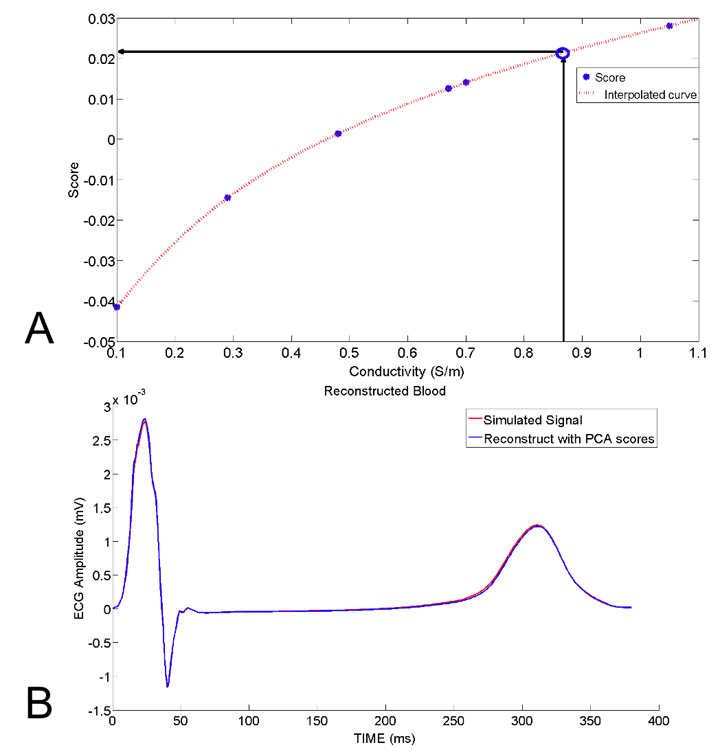PCA-based optimization of multiple tissue conductivities using forward-calculated ECGs
- Forschungsthema:PCA-based optimization of multiple tissue conductivities using forward-calculated ECGs
- Typ:Diplomarbeit
- Betreuung:
- Bearbeitung:
During the last few years, patient-specific computer models have become increasingly important. Besides incorporating electrophysiological pathologies and accounting for different anatomical geometries that are usually extracted from MRI data, macroscopic tissue properties like the electrical conductivity are important parameters for realistic simulations. Especially when it comes to solving the forward problem of electrocardiography where the potential distribution on the body surface is calculated, tissue conductivity of different organs in the torso impacts decisively on the results.
This project aims at optimizing the conductivities of manually selected structures and organs in order to achieve the best possible match between measured and simulated data (BSPM or ECG). This approach seems to be coherent as published conductivity values show considerable variations in the low frequency range. Furthermore measurement data for human specimen are frequently missing. So there is often only a vague range for the conductivity of a certain structure. Within this range, this project attempts to determine the most likely conductivity value using a principal component analysis (PCA) based approach. In a previous project, a correlation between PCA-scores and tissue conductivities has been recognized. After investigating this relationship in more detail an optimization framework will be created that allows for the adaptation of multiple organ conductivities at the same time.

A) Relationship between the PCA-score and the organ conductivity.
B) Simulated ECG compared to the reconstruction result based on the PCA approach

